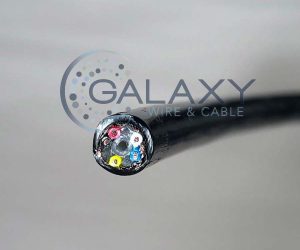 Vented cable is a rapidly expanding product line that continues to grow in the custom wire and cable industry, with Galaxy being among the industry’s leaders in this cable application. Vented cable, sometimes called vent tube cable or breather tube cable, is a significant part of Galaxy’s business. As with all custom cable applications, Galaxy excels in assisting its customers with designing and supplying custom vented cable.
Vented cable is a rapidly expanding product line that continues to grow in the custom wire and cable industry, with Galaxy being among the industry’s leaders in this cable application. Vented cable, sometimes called vent tube cable or breather tube cable, is a significant part of Galaxy’s business. As with all custom cable applications, Galaxy excels in assisting its customers with designing and supplying custom vented cable.
Why is a vented cable necessary for certain applications?
A device that is measuring pressure, level, or flow in some sort of liquid generally requires a vent tube. This is because any pressure or level transmitter is affected by the atmospheric pressure surrounding it. For cables not in water, it can be equalized by venting the inner chamber of the sensor to the atmosphere around it. Water, or other liquid, poses more of a challenge – it would ruin the electronics of the transmitter or sensor if the liquid were to come in contact. So a vent tube is placed inside the cable to allow for accurate readings while submerged, since it compensates for pressure changes of the surrounding area.
Who uses vent tube cables?
There are numerous types of sensors that utilize vented cables. Devices such as submersible level transmitters that measure the level of liquid are large users. This could be wastewater treatment plants, sewer flow monitoring systems, oil and gas reservoirs, and more. There are overflow alarms and autonomous water level loggers that require breather tube cables. Also, pressure transmitters are often associated with these cables, dependent upon the environment that the transmitter is sensing.
What can Galaxy offer for vented cables?
As with almost any custom cable, the design and performance dictates the materials that can and should be used. Particularly in a submerged cable, it is necessary to think about the type of liquid that the cable jacket will be exposed to. Is it fresh water? Sea water? Sewage with chemical exposure? All of these factors are critical to get a cable jacket that is resistant to the environment and does not degrade. Depending upon the application, Galaxy supplies many types of vent tube cables using Polyurethane, Hytrel, Polyethylene, ETFE, Tefzel, and FEP. Other jacket compounds might be used when appropriate to the application. Vent tubes can utilize a number of different materials, for a range of temperature applications and flexibility. Measurements and tolerances of the vent tube and finished cable are often critical, and Galaxy can make sure the cable delivers in all quality aspects.
Whether you have already specified the materials for your vent tube cable, or you need assistance in engineering the right vented cable for your application, contact Galaxy to supply the right vented cable.
